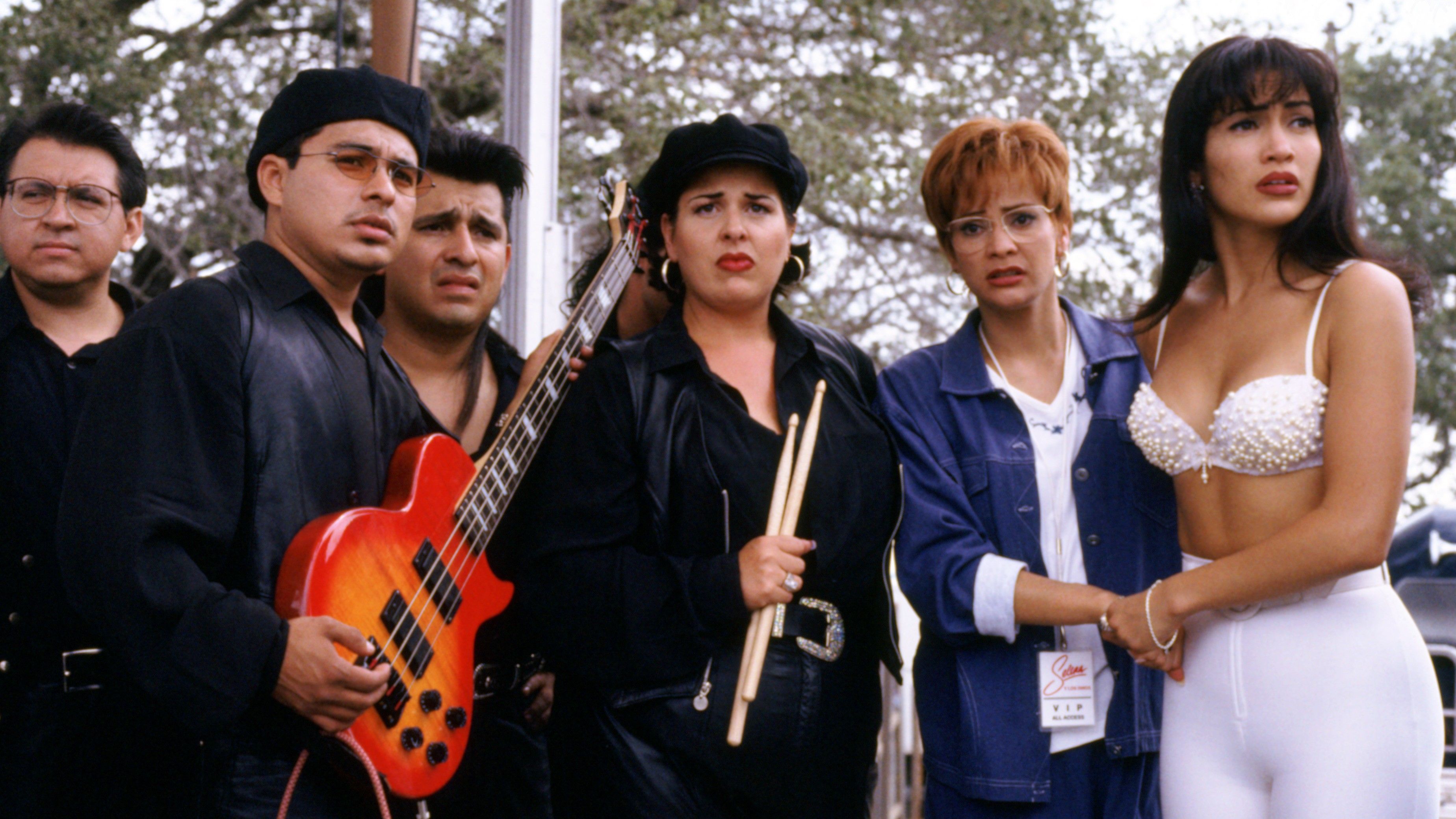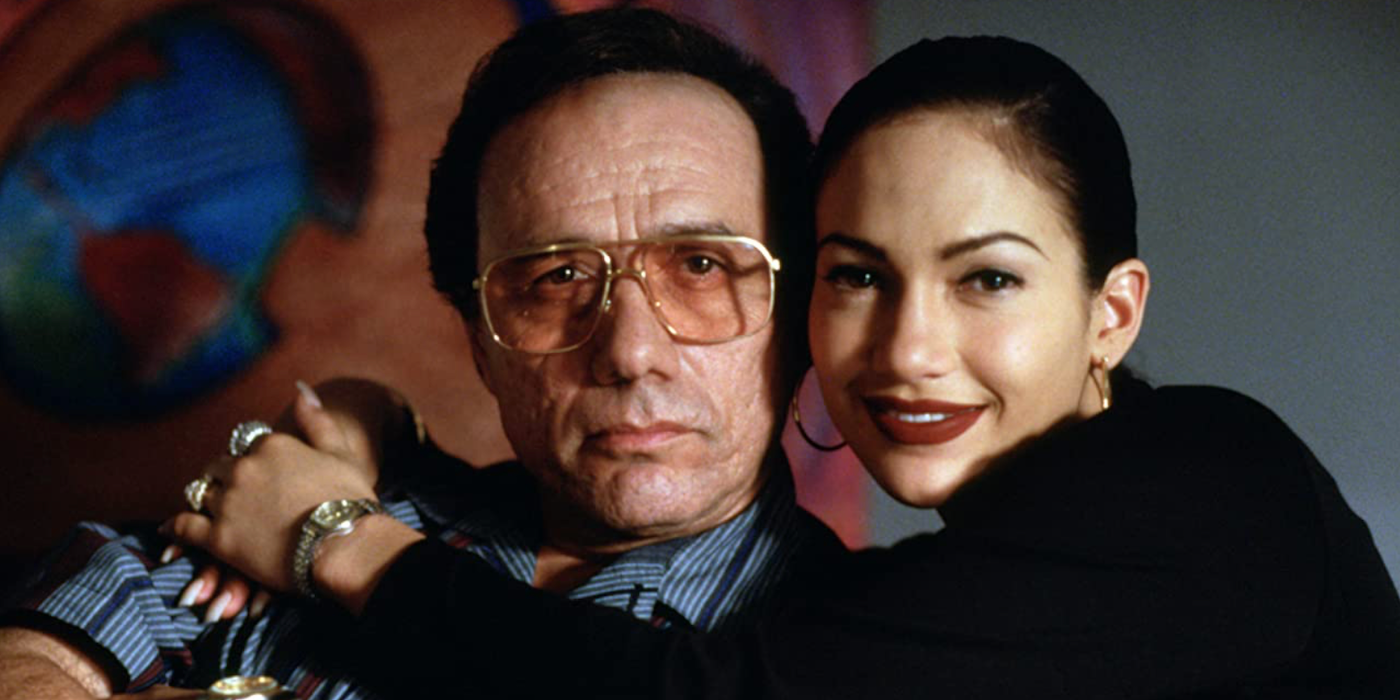Back in 1997, the music biopic on Selena Quintanilla was released only two years after her murder at 23 years old. It made a star out of Jennifer Lopez in the leading role. As a tribute, it shows how much of a trailblazer the young Latina was. At one point, her father knows an employer hasn’t paid enough for a performance. “She’s a woman, tu sabes,” is the response. You know. It wasn't long after when Selena proved the employer wrong, bursting her way into the male-dominated Tejano music scene. It was just one of many glass ceilings she shattered.
Celebrating 25 years since its release, time has flown by, but the power of this biopic remains strong. Although indirectly, the movie encapsulates many queer readings. Beyond an empowering Latina figure, Selena can also be a posthumous queer icon. On the surface there’s her music inspirations and aesthetics, steeped in queer culture. In taking a more thematic look, there is the emphasis on identity and independence. These are the movie’s biggest themes and through them, the queer status of Selena shines as big as its star’s famous smile.
There is no other way Selena can start than with the singer’s 1995 live performance at the Houston Astrodome. She makes belting out her “Disco Medley” look easy, in front of a screaming sold-out crowd no less. In her sparkling, flared purple jumpsuit, Selena looks like an extra member of ABBA. It's spectacular, although the real footage is something else to behold. One disco tune after another plays. The importance of the original divas who sang them cannot be ignored. In the movie’s abbreviated version of the performance, Gloria Gaynor and Donna Summer are featured prominently. These were Black female music artists who had adoring LGBTQ fans. Similar to Selena, Donna Summer gained her gay icon status without purposely meaning to do so.
In 2012, Paul Flynn penned a tribute after Summer's passing, focusing on the fact that she created some of her most famous hits with straight men. There was no specific attention on attracting a queer following. “Neither Summer nor Giorgio Moroder nor Pete Belotte were children of the night,” he writes. “They were simply blessed with a divine ability to intuit how 3 a.m. under a mirror-ball in a Metropolitan gay nightclub ought to sound, at its most sublime and transcendental.” In Manuel Betancourt’s essay, "Dreaming of You: Selena’s Queer Legacy," he describes the many doors Selena helped open. In Lourdes Portillo’s Corpus: A Home Movie About Selena, San Antonio artist Franco Ruiz Mondini remembered how Selena “helped make visible a queer latinidad that had long remained in the closet. Just the impact of seeing drag queens lip-syncing to Spanish-language songs was revelatory.” Aesthetics and queer anthems aside, it isn’t long after this dazzling opening the biopic jumps way back to her father as a young man.
In 1961, Abraham (Panchito Gómez) is trying to find success with his band, Los Dinos. Unfortunately for them, they repeatedly find themselves a rock stuck in a hard place. They experience bigotry from white employers, who thought “they were Italian, not Mexican.” Abraham and his friends not knowing Spanish turns into a whole other obstacle. At a venue, none of the Mexicans want to hear Oldies music, they want to dance. It’s ironic too; the song Los Dinos attempt to finish is, “We Belong Together,” by Ritchie Valens, another Mexican-American singer who broke barriers. These memories affect Abraham when he later realizes his children might just be able to find the success he couldn’t.
Older and now a father, Abraham (Edward James Olmos) hears the natural voice of young Selena (Rebecca Lee Meza), roping in his other two children to form, Selena y Los Dinos. Abraham makes her learn Spanish lyrics, a language she doesn’t even know how to casually communicate with. “We’ve got to be more Mexican than the Mexicans and more American than the Americans,” he tells her. “Both at the same time.” He has plenty of first-hand experience on this. Identity is incredibly important to the movie, from Selena being an English-speaking American first and then having to strengthen a connection to her Mexican culture. Identity is just as important for the queer Latinx community.
Being Latin-American can mean conforming to an “All-American” childhood to fit in with friends and peers. That is, until you mature to an age where you realize you have to play catch-up, only then learning to love and respect your culture. This becomes more difficult when sexuality and gender enters in, adding yet another identity one needs to tackle. This isn’t an issue from back when the movie was released. From an article in The Prospect Daily, current LGBTQ Latin youth in El Paso still struggle with handling these identities. Religion and conservative values are one obstacle. Another being the prevailing masculine pride of machismo leading to conflict between male elders and LGBTQ youth. And in Selena, the rising star of the Quintanilla family balances her identity almost effortlessly. She wins over the Mexican demographic. At a Spanish-speaking press conference, she greets everyone with a hug and a kiss on the cheek. Stuck on finding the right word for “exciting,” she simply blurts it out in English. Smiles and laughs erupt all around. At a Mexican-located performance, the crowd is way over the maximum number. It collapses into chaos when there’s a stampede to reach the stage. People are nearly severely injured and canceling the concert seems to be the only right decision. At least that is until Selena calms everyone down and saves the performance. As Selena matures into a teen and then early adulthood, her need for independence is crucial to cementing her status as a queer icon.
At first her wardrobe is heavily criticized by Abraham, her father, who's worried it’s way too revealing for the men in the audience. It’s not a bra, it’s a bustier! But his strict hold comes to a head when Selena falls for fellow band member Chris Pérez (Jon Seda). She really has no life outside her growing musical stardom, so it isn't surprising the two become close. During auditions, Abraham instantly disapproves of Chris from his heavy metal attire alone. It really isn’t until Abraham sees the two together, he puts his foot down, on the van brakes he’s driving and on the relationship. He goes so far as to threaten to end the band if they don’t comply with breaking things off.
Far from being stuck in a negative depiction, Abraham is a loving father, but he has his moments where his own machismo slips out. Viewing himself as the main authority of the family being the biggest example. His ultimatum to Selena is not reasonable in the slightest. Having parent demand their child end a relationship, is something the queer community can understand too well. In Joe Galván’s essay on Selena's connection with queer Tejanos, he relates her relationship crisis as something that “carries a twinge of pain for queer fans of her music. They understand the peril of being found out by their families, the ache of not being able to hold their boyfriend’s hand at a barbecue or of having that boyfriend introduced to relatives as ‘just a friend.’”
This "forbidden love" between Selena and her eventual husband ended in the best case scenario, an ideal prospective for those in the LGBTQ community. Selena takes control of the situation, if rather extremely. She makes Chris elope with her, this rash decision being what helps Abraham realize how serious the two are. Although there was a brief moment the biopic’s director Gregory Nava could have altered this. The real-life Chris and Abraham had very different thoughts on the elopement. Chris told Nava that despite what was believed, it was Selena’s idea, so Nava wrote it into the script. After Abraham read it, he was absolutely against it.
Before her death, Selena was building up her fashion brand, a far cry from the low-budget creations she made out of her early outfits. Living in the border state of Texas, her fame crossed over with ease. As a daughter, wife, dancer, and artist, Selena was a great many things, and many times committed to doing it all at the same time.
ince playing her, Jennifer Lopez has since become a queer ally herself, adding yet another queer context to Selena. Joe Galván finishes his piece with a personal reflection. “As was the case for so many queer Texans, we came to see versions of our stories in hers: brilliantly transfigured, free to love grandly, and emboldened to cross over the river of self-doubt.”
So, 25 years later, this biopic immortalized the Queen of Tejano as an empowering female figure. It's just as important to recognize its posthumous queer legacy, too.




